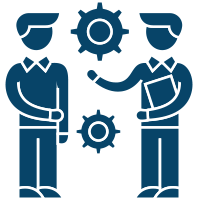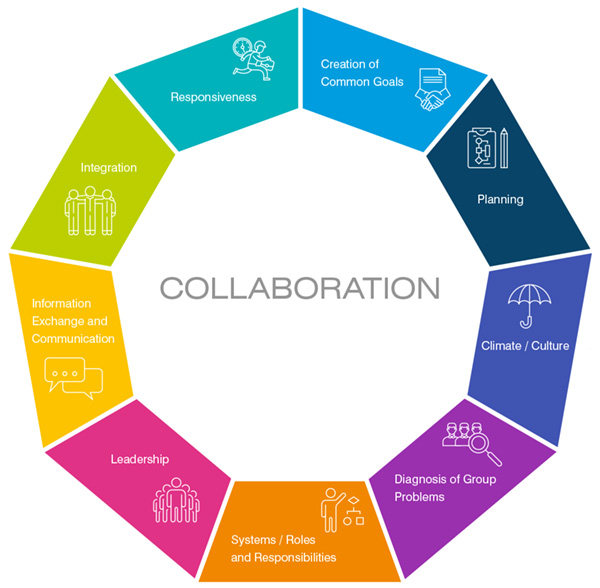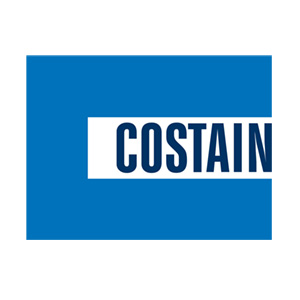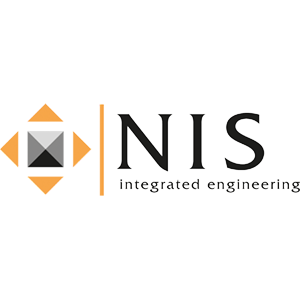
Collaboration


Collaboration
Collaboration is when individuals or groups work together, combining their strengths and negating weaknesses to accomplish a set of goals.
Collaboration
The concept of collaboration is increasingly visible in the commercial world, particularly in frameworks and joint ventures involving complex project teams.
The benefits of employing a collaborative approach are many and organisations often undertake standards such as ISO44001. However, a summary of ISO 44001 suggests it is ‘a structured approach to sharing resources, experience and skills supported by a method for creating, delivering and exiting relationships.’
However, it doesn’t create a behavioural capability where people think and behave from a different mindset; for an organisation to move towards a more collaborative culture requires a change of culture.
Acorn have extensive experience of working within complex and challenging teams in the construction and infrastructure, engineering, nuclear, pharmaceutical and other key industry sectors.
Acorn's approach
Acorn support clients to create and embed a genuinely collaborative culture that delivers a unified vision and aligned process for the lifetime of a team or project.
A fully integrated team is better placed to deliver consistently to agreed targets, resolve problems, and make efficiency and cost-saving innovations.
Companies stand to benefit commercially where an ability to genuinely pull together on core values and key processes deliver a measurable increase in the team’s ability to meet performance targets.
The process involves working from the ‘top down’ from board level to supervisors, to engage those parties who have the greatest influence with the intent and strategy and requires the on-going support and challenge of senior managers.
Acorn Collaboration Model

- Clear, shared, owned, bought into.
- Translated down into project realities.
- Actions and decisions reviewed against them.
Secure, realistic planning base to work from to achieve innovation, transfer of best practice, cost/time savings, problem-solving, management of changes.
- Contributions easily made and valued, with recognition given.
- Skilful listening.
- Appreciation of progress/achievement.
- Rewarding place to be.
Joint activity to anticipate and address potential problems/issues.
Sound base of understanding allows pragmatic crossover and flexibility.
- Shared responsibility for group performance drives distributed leadership through informal engagement as need arises.
- Reduced reliance on small number of individuals.
- Group more self-managing.
- Meetings form backbone of communication process supported by informal contact and sharing of high-quality information.
- Embedded culture of information shared openly.
- ‘Long term’ oversight and stakeholder management are routine.
- Deliberate integration of systems and procedures into common project process.
- Strategic alignment of business drivers around common success criteria.
- Fully collaborative effort.
Responses provide suggestions/innovations for improvement
Collaboration is when individuals or groups work together, combining their strengths and negating weaknesses to accomplish a set of goals.
Collaboration
The concept of collaboration is increasingly visible in the commercial world, particularly in frameworks and joint ventures involving complex project teams.
The benefits of employing a collaborative approach are many and organisations often undertake standards such as ISO44001. However, a summary of ISO 44001 suggests it is ‘a structured approach to sharing resources, experience and skills supported by a method for creating, delivering and exiting relationships.’
However, it doesn’t create a behavioural capability where people think and behave from a different mindset; for an organisation to move towards a more collaborative culture requires a change of culture.
Acorn have extensive experience of working within complex and challenging teams in the construction and infrastructure, engineering, nuclear, pharmaceutical and other key industry sectors.
Acorn Collaboration Model

- Clear, shared, owned, bought into.
- Translated down into project realities.
- Actions and decisions reviewed against them.
Secure, realistic planning base to work from to achieve innovation, transfer of best practice, cost/time savings, problem-solving, management of changes.
- Contributions easily made and valued, with recognition given.
- Skilful listening.
- Appreciation of progress/achievement.
- Rewarding place to be.
Joint activity to anticipate and address potential problems/issues.
Sound base of understanding allows pragmatic crossover and flexibility.
- Shared responsibility for group performance drives distributed leadership through informal engagement as need arises.
- Reduced reliance on small number of individuals.
- Group more self-managing.
- Meetings form backbone of communication process supported by informal contact and sharing of high-quality information.
- Embedded culture of information shared openly.
- ‘Long term’ oversight and stakeholder management are routine.
- Deliberate integration of systems and procedures into common project process.
- Strategic alignment of business drivers around common success criteria.
- Fully collaborative effort.
Responses provide suggestions/innovations for improvement
Acorn's approach
Acorn support clients to create and embed a genuinely collaborative culture that delivers a unified vision and aligned process for the lifetime of a team or project.
A fully integrated team is better placed to deliver consistently to agreed targets, resolve problems, and make efficiency and cost-saving innovations.
Companies stand to benefit commercially where an ability to genuinely pull together on core values and key processes deliver a measurable increase in the team’s ability to meet performance targets.
The process involves working from the ‘top down’ from board level to supervisors, to engage those parties who have the greatest influence with the intent and strategy and requires the on-going support and challenge of senior managers.
The collaboration questionnaire
A diagnostic tool to assist companies in implementing effective collaboration, Acorn’s questionnaire is built on more than two decade’s experience and identifies nine key collaborative behaviours that we know result in accelerated team performance.
The collaboration questionnaire measures those factors within a team at a given point in time and is used alongside other data to inform the team’s progress.
The questionnaire can be used during any stage and can be repeated at key points throughout the lifetime of the team/project, providing quantifiable data on key requirements much talked about but usually left unmeasured.
The data is used to generate actions and resolutions, driving the team towards higher performance.

The collaboration questionnaire
A diagnostic tool to assist companies in implementing effective collaboration, Acorn’s questionnaire is built on more than two decade’s experience and identifies nine key collaborative behaviours that we know result in accelerated team performance.
The collaboration questionnaire measures those factors within a team at a given point in time and is used alongside other data to inform the team’s progress.
The questionnaire can be used during any stage and can be repeated at key points throughout the lifetime of the team/project, providing quantifiable data on key requirements much talked about but usually left unmeasured.
The data is used to generate actions and resolutions, driving the team towards higher performance.

Collaboration in action
JOINT VENTURES – multiple companies with diverse cultures and processes are required to quickly come together to deliver effectively on the same piece of work, be it at bid-winning stage or project delivery. True collaboration avoids the tendency to adopt the dominant culture’s processes, which were not designed to meet the needs of the collective group.
TRADITIONAL ‘CONTRACTOR’ RELATIONSHIPS – many main contractors now want to create framework agreements with suppliers, and work in a manner that is collaborative rather than adversarial, to iron out inefficiencies and solve problems to meet performance targets and deliver cost savings.
IN-HOUSE PROJECT TEAMS – these teams can benefit where collaboration between functions will resolve inefficiencies and frustrations in the project delivery, increasing the likelihood of successfully delivering KPI.
Contact Acorn to find out more about how we can support your internal or collaborative joint venture project teams.
























